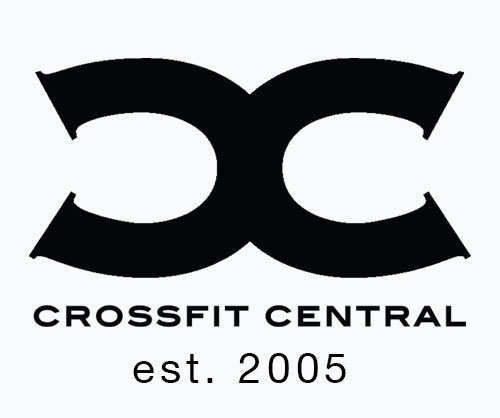Finding the Hidden Sugar
by Dr. Lauryn Lax | photo by Morgan Sessions
Sugar is EVERYWHERE.
Despite knowing that too much sugar is not good for us, recent trends show that sugar consumption continues to be on the rise.
Sugar Trends
Collectively, Americans will consume a total of 11.8 TONS of sugar in 2018 alone (up from 9.9 million TONS in 2010) (1). Other statistics report, we eat about 150-170 pounds per person every year, and more than 3 pounds of sugar every week! (2)
Compare those numbers to the average consumption from these years (3):
1770: 4 pounds of sugar per year(note: sugar was only for the “upper class”)
1800: 18 pounds of sugar per year
1900: 90 pounds of sugar per year
2018: 150-170 pounds of sugar per year
—And, Houston, we have a problem!
The Sugar Culprits
Even more startling, most of America’s sugar consumption is NOT found in Hershey’s candy bars or donuts. Most of this sugar is hidden in everything from Starbuck’s Frappucinos, to almond milk, yogurt, granola bars, cereal, sports drinks, juices and soda.
Here are 10 of the most common “healthy” foods that actually have lots of sugar hiding in them:
Cereals (granola, flavored oatmeal, Kashi Krunch, etc.)
Store-bought breads (including “whole grain”)
Dried fruit and other fruit snacks
Protein bars & granola bar
“Low cal” or “healthy” drinks, like smoothies, coffee, energy drinks, blended juices and teas
Protein bars and meal replacements
Sweetened yogurts and other dairy products (like flavored kefir, frozen yogurt, etc.)
Frozen waffles or pancakes (even “whole grain”)
Bottled sauces, dressings, condiments & marinades (like tomato sauce, ketchup, relish or teriyaki, for example)
Restaurant foods (where sugar is used in sauces, various desserts and dressings for extra flavor)
See some shocking examples at the end of this article.
Why is Sugar So Bad?
Sugar has been called “8 times more addictive than cocaine,” based on studies conducted in rats (4).
Research also shows that sugar can interfere with the normal hormone signaling from ghrelin and leptin—both which help control appetite and satiety (5, 6). Although this isn’t technically an “addiction,” from a general perspective it can lead to the same result—overconsumption.
In addition, excess sugar consumption is associated with unwanted weight gain, metabolic dysfunction, fat storage, fatigue, and blood sugar and cortisol imbalances (7, 8, 9 10).
What About Sugar Free Options?
Even if you choose “sugar free” options, you’re NOT in the clear.
Those artificial sweeteners may say “sugar free,” but your body can have the exact same inflammatory and blood sugar response (if not worse) that it does with the sugar-filled counterparts (11).
Common side effects from artificial sweeteners like aspartame, Sucralose, xylitol, erythritol, and stevia include: nausea, stomach cramps, headaches, blurred vision, gas, bloating, heart palpitations and chest pain (12).
What to Do About It
Train your body to FIRST love real food. Read ingredients and become aware of what you are consuming.
In order to “tame” your sweet tooth (so it doesn’t tame you), the BEST (fastest AMRAP) way to “reset” is to cut it out—cold turkey.
Take the plunge and cut out all added (hidden sugars) in everything except for real foods (like starchy tubers, root vegetables and fruits). Base your meals and snacks on the following:
Organic, pasture-raised and grass-fed meats & poultry
Wild-caught fish
Colorful low-starch veggies
Healthy plant & animal fats
Some starchy tubers & fruits—limit those amounts to 1-2 servings per day of each
LOTS of fresh water
NO hidden sugars, artificial sweeteners, sweets (except 100% dark chocolate)
Try your “sugar reset” anywhere from 7-30 days—and see how you feel.
The best part?
Once you start to re-train your tastebuds to get “clean” off sugar, sugar won’t taste as good as it once did.
Sort of like cleaning your windshield:
If you have A LOT of dirt on your windshield to start, then if you add more dirt to the windshield (i.e. keep eating sugar), then you probably won’t notice the dirt
If you have a CLEAN windshield however, you’ll easily spot that speck of dirt—and not feel 100% in the process.
Sneaky Sugar List
Get the scoop on some of the top hidden sources of “sneaky sugar” and artificial sweeteners lurking in your daily “healthy eats.” (We’ve got your back).
Buddha’s Brew Kombucha: 24 grams per whole bottle
Health-Ade Kombucha: 10 grams per bottle
Paleonola Granola: 4 grams per 1/4 cup
Daily Greens Bottled Green Juices: 18 grams
Whole Foods Chocolate Almond Banana Smoothie: 20 grams
Starbucks Caffè Latte: 13 grams
Starbucks Iced Caffè Mocha: 30 grams
Odwalla Smoothie: 47 grams per bottle
Apple Cinnamon Oats: 12 grams
Kashi Krunch Cereal: 13 grams
Honey Mustard Salad Dressing: 2 grams
Avocado Toast (Bread): 4 grams
Lara Bar: 16 grams
ZonePerfect Bar: 5 grams
PowerBar Energy Bar: 27 grams
Face Flavored Greek Yogurt: 11 grams
Sources:
1. https://www.statista.com/statistics/249692/us-sugar-consumption/
2. https://www.dhhs.nh.gov/dphs/nhp/documents/sugar.pdf
3. http://kolpinstitute.org/facts-about-sugar/
4. https://www.ncbi.nlm.nih.gov/pubmed/23719144
5. https://www.ncbi.nlm.nih.gov/pubmed/15181085
6. https://www.sciencedirect.com/science/article/pii/S1607551X12003622
7. https://www.ncbi.nlm.nih.gov/pubmed/26376619
8. https://www.ncbi.nlm.nih.gov/pmc/articles/PMC3253931/
9. http://journals.plos.org/plosone/article?id=10.1371/journal.pone.0166077
10. https://www.ncbi.nlm.nih.gov/pubmed/3820066
11. https://www.usnews.com/news/health-care-news/articles/2018-04-23/study-artificial-sweeteners-linked-to-diabetes-obesity ; https://plan.core-apps.com/eb2018/abstract/382e0c7eb95d6e76976fbc663612d58a
12. https://www.ncbi.nlm.nih.gov/pmc/articles/PMC3198517/
photo via Dr Anna Garrett

